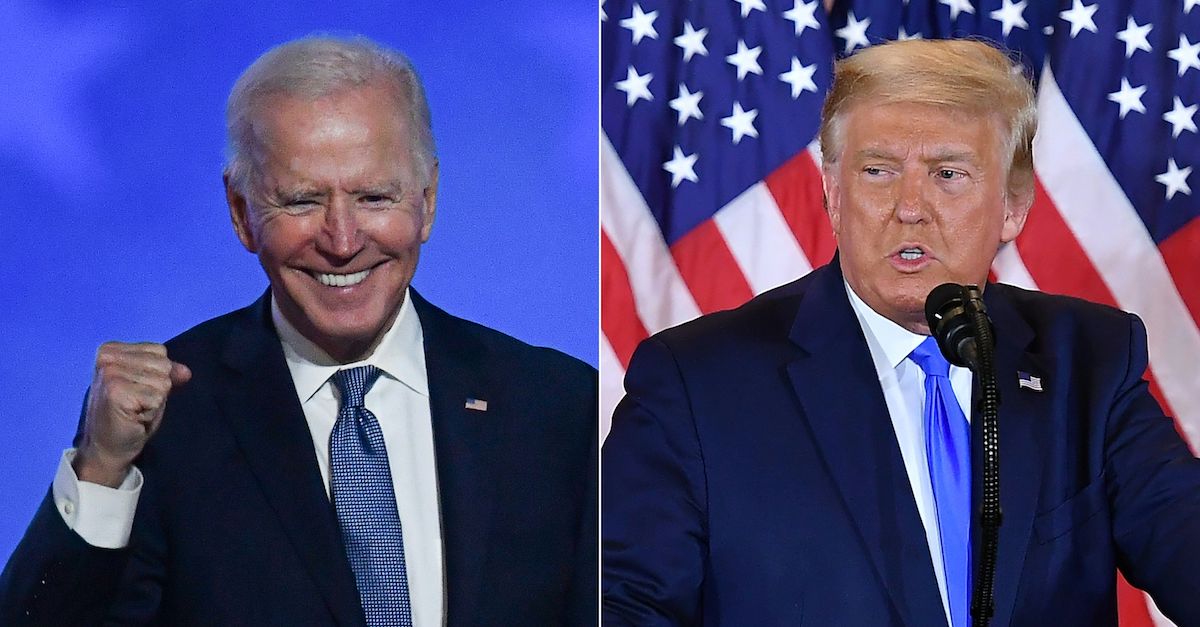
In the words of one of the better songs from one of the worst Broadway composers who ever lived: “Past the point of no return/The final threshold/The bridge is crossed/So stand and watch it burn/We’ve passed the point of no return.”
Today, Tuesday, Dec. 8, is the federally-mandated day most states will certify their 2020 presidential election results under the so-called “safe harbor deadline” (“so-called” because none of those words actually appear in the statute itself).
And, as all things legal and election-related have been trending since early November, today marks the official beginning of the end for President Donald Trump’s courtroom circus that has supposedly been aimed at maintaining occupancy of the White House.
Under the Electoral Count Act (ECA) of 1887, Congress has long vested each of the several states with the power to determine its own electors for the purposes of the Electoral College. But the rules outlined in the statute function as more of a push-and-pull than a full-on acceptance of each state’s primacy here. The decision to accept a potential slate of electors can, under certain circumstances, rest with Congress.
“Most states will certify their election results by Dec. 8, which is their safe harbor deadline,” Eugene Mazo, the Visiting Associate Professor at the Louis D. Brandeis School of Law, recently told Law&Crime. “They have a lot of incentive to do this because under the law, at that point Congress can’t review their results. All of the members of the Electoral College will formally be casting their votes in their respective state capitals next Monday, on Dec. 14.”
The relevant provision of the ECA is contained at 3 U.S.C. §5 and provides that Congress must accept as valid any state’s final determination if their results are certified by the safe harbor deadline. With a medium-sized caveat.
The Congressional Research Service explains:
Federal law provides that if a state, under its established statutory procedure, has made a “final determination of any controversy or contest” relative to the presidential election in the state, and if that determination is completed under this procedure at least six days before the electors are to meet to vote, such determination is to be considered “conclusive” as to which electors were appointed on election day.
This year, the Electoral College meets on Dec. 14, and today is six days before that date. Thus: today is key.
In other words, Congress must accept the Electoral College slates (the lists of named electors) from states that have certified their votes by today–barring any outstanding legal disputes. Which means that certain states may not be entitled to claim safe harbor status.
Currently, Trump and his allies have filed over four dozen lawsuits that purport to revoke Joe Biden’s Election Day wins. Only one of those lawsuits has been successful and that lone victory, small bore in the extreme, did not impact enough votes to make a difference. Most of the rest of Trump’s lawsuits have been losses: many have been summarily dismissed, abandoned, pulled by the plaintiffs themselves and decided in favor of the defendants.
A few extant state cases remain active in states where Biden won: Arizona, Georgia, Michigan, Nevada, Wisconsin, and so on. And there is also a federal case ongoing in Pennsylvania.
But the mere presence of active litigation doesn’t necessarily mean a state won’t be able to claim safe harbor status–the litigation would almost certainly have to be fruitful and provide results in the form of relief requested. Absent that, it’s hard to see how a state claiming safe harbor status would even be challenged.
Additionally, since this is all about electors and would-be competing slates of electors, it’s important to note that Trump and his allies haven’t actually introduced the chaos element necessary to truly contest Biden’s Electoral College votes. That is, there isn’t any serious effort–at least not one that has so far gained any steam–to create and send pro-Trump slates of electors alongside or in lieu of Biden electors in the states Trump needs to win.
Not coincidentally, such competing slates are precisely what prompted Congress to pass the ECA in the first place.
Tulane School of Law Professor Ross Garber explained the history here in a September article for CNN:
This scenario with competing slates of electors has happened before, on a large scale in 1876, in the race for president between Rutherford B. Hayes and Samuel Tilden, where Republicans and Democrats in key states submitted competing slates of electors. In 1960, Hawaii submitted two sets of electors, and members of the Florida legislature contemplated submitting a competing slate of electors in the 2000 election.
Ultimately, of course, Florida did not submit a second slate of electors in 2000 and the presidency was awarded to George W. Bush amidst a contentious partial recount that threatened to overturn the GOP’s lead in the Sunshine State.
“[T]he Supreme Court in Bush v. Gore stopped the Florida recount, effectively handing the election to Bush,” Garber noted. “The court said that Florida wanted to get the benefit of the safe harbor provision but there was no way all disputes and recounts could be completed that day, so the recounts should cease. Bush was ahead, so he got Florida’s electoral votes and consequently became president.”
This time, the safe harbor provision clearly favors Biden and the current situation does not compare to Bush v. Gore.
[images via ANGELA WEISS and MANDEL NGAN / AFP via Getty Images]